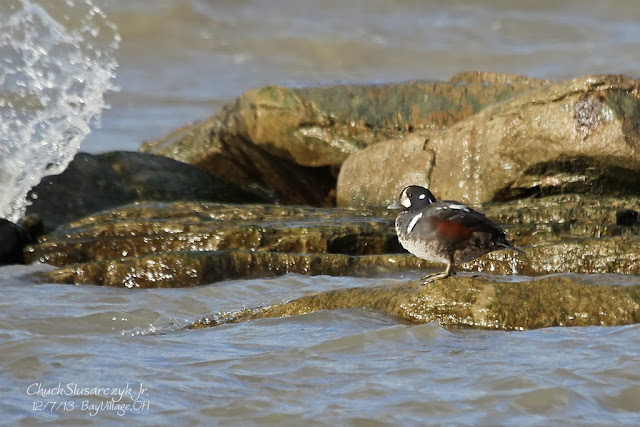There are plenty of birds to see in California. I don't want to say that "birding is easier than botanizing", but honestly- even with different plumages and dimorphism of the sexes- it is far less confusing than sorting thousands and thousands of native vs. non-native plants.
 |
| Western Grebes are as common as they are beautiful. |
Two grebes that I hoped to get on this trip were the Western Grebe and the very similar Clark's Grebe. The major difference is the location of the eye in reference to the black plumage on their heads. Western Grebe can be found in salt, brackish, and fresh water. Clark's can be in the same locations- however they are much rarer.
Many Westerns were seen, but the Clark's eluded me. In all fairness, my birding was all-take-it-as-it-comes. Never once did we set out to see a Clark's Grebe, and if we had made more of an effort we would have had more "success".
 |
| Males Surf Scoter in breeding plumage. |
Scoters come in several forms and both Surf Scoters and Black Scoters were easy enough to see along the coastal beaches. This particular bird was feeding in the shallow waters of Bolsa Chica Wildlife preserve. Although we do see Surf Scoters in Ohio, we do not get them in this breeding plumage. The Californians call these boys "skunk heads". The outrageous clown-colored bills are used for foraging shellfish, i.e. clams.
 |
| American Coot and Cinnamon Teal (male) |
Cinnamon Teal is a western bird and a real rarity in Ohio. In fact, I have only seen one before- and it was a female. To witness this attractive cinnamon colored male was just "duckie". It is best to see birds where they belong and learn about their behaviors and foraging habits in their native range. Outlier birds are fun to chase, but one should study a species in their normal range when opportunity allows,
 |
| Surfbird |
Surfbird! This is a western speciality. Honestly, when I first saw this bird- I didn't know what it was! What I did know: it was something I had never seen before. A little diligence with a field guide soon made its identity clear. The stubby, two-toned beak was the biggest clue for me.
 |
| Surfbirds foraging along the breakwalls. |
Surfbirds forage the mosses and rocks along breakwalls. My first thought when encountering them was how similar their shape and behavior is to Purple Sandpipers. However, purple pipers are not found on the west coast and Surfbirds are not on the east coast.
 |
| Black Oystercatcher |
This bird was as obvious to identify as it was to locate! It is rather difficult to hide from birders and non-birders alike when one flies about with an orange beak and piercing golden eye. Their loud piping calls draw attention as well. Black Oystercatchers- unlike their eastern counter parts, the American Oystercatcher- forage on break walls and rocks.
My daughter took to calling them "Orange-beaked Flotsam Chickens." She is generally better at identifying fish species.
While this is by no means representative of all the birds we saw in and around Los Angeles, it is but an overview of the most memorable water-related birds. I am still trying to "recover" from all that sunshine and glare off the blue waters.
Thank goodness I am back in cold, cloudy Ohio!




























